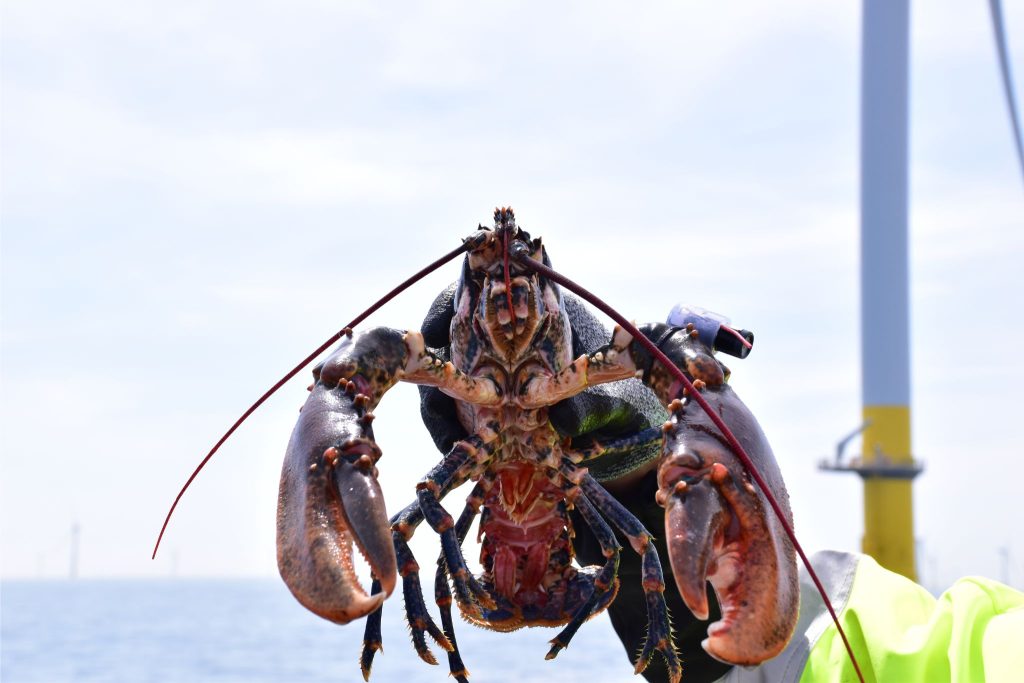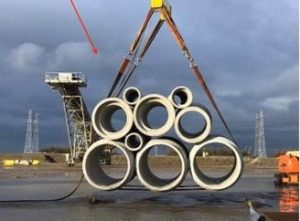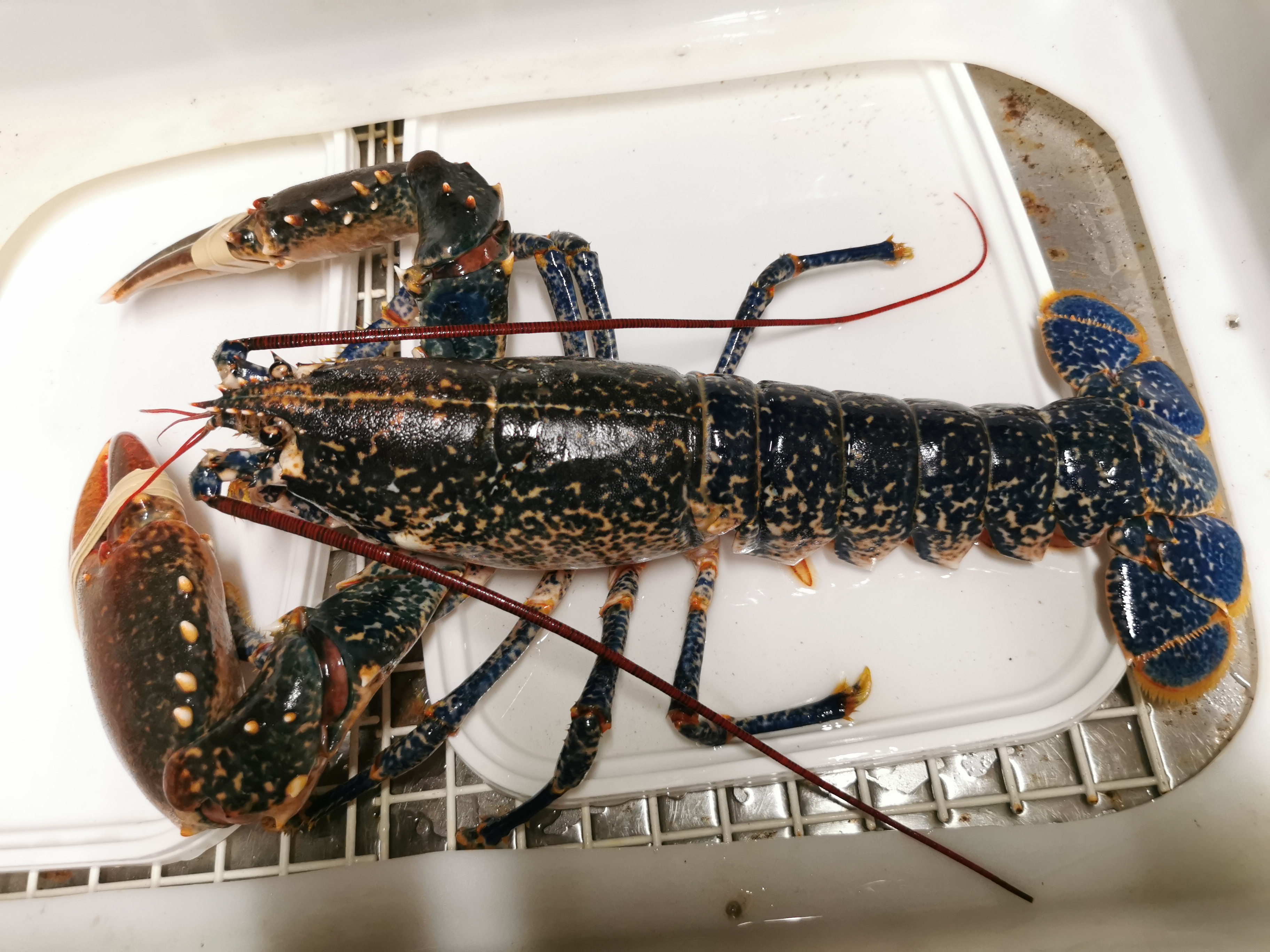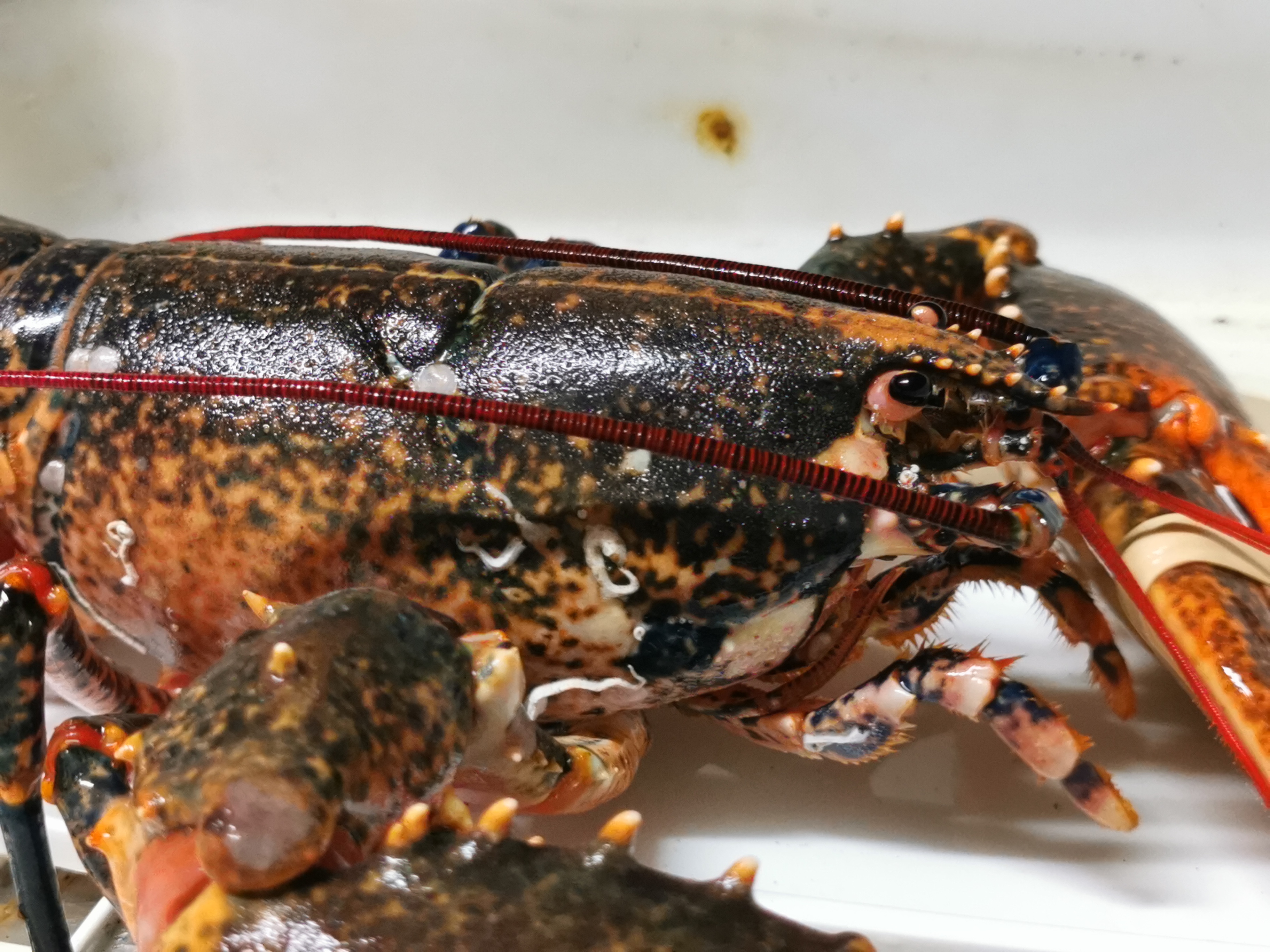This project aims to expand knowledge on artificial reef designs, and the behaviour of the European lobster in this environment. As a result, this knowledge will inform the costs and benefits of artificial reefs in offshore wind farms (OWFs). At four locations around one wind turbine within the Borssele I & II wind farm, concrete pipes were placed as artificial reefs. Two of these sites have their own scour protection. Scientists from Wageningen Marine Research have studied the behaviour of cod and lobster around these reefs in 2021 and 2022, using acoustic tags. Studying the behaviour of species that inhabit OWF areas can lead to a better understanding of their hiding and foraging preferences, and how these habitats develop.

Methods
The project uses pipe reefs, which are piles of concrete pipes of different sizes, and scour protection made of granite rocks. To investigate the presence and track the movement of European lobster around the monopile and the artificial reefs, acoustic telemetry was used, using a grid of acoustic receivers and deploying lobsters with acoustic tags with pressure and acceleration sensors. The acoustic receivers were mounted on customised frames, with the receiver placed on top of a 1.5 m tall stainless-steel tripod. A total of 16 sets were deployed to enable fine-scale positioning at each of the four artificial reefs, and around the monopile in the centre of the arena. The fine grid of acoustic receivers allowed a satisfactory coverage despite some losses.
The monitoring of translocated animals took place with 2 batches of 12 animals each, carried out in 2021 and 2022. Environmental data were collected from a weather station buoy through the entire monitoring period (17.7 km away from the study area).
Results
Behavioural patterns were estimated using Hidden Markov Models (HMM), and revealed that resident animals consistently hid in the artificial reef structures for extended time periods. The estimated territories (i.e. home range area) ranged from 102 to 254 m2. These were substantially smaller than those encountered in other studies (1,728 m2 and 173,053 m2). All European lobsters had left the monitoring area after 51 days. Factors for this low attachment could not be fully identified, but potential explanations include: the effect of animal translocation (not settling because of strong homing sense for the original home), lack of food on the young reefs, or lack of suitable crevices.
Adult animals do not seem to be the best candidate for translocation. Additionally, locally caught animals may be more optimal for artificial reef functioning studies.
Tips and Tricks
- Working with translocated lobsters is not recommended as this may have influenced the lobsters’ behavior and project results.
- The method used for releasing lobsters was successful. The lobsters were placed into a cage that sunk to the sea floor, and they could easily crawl out when the cage was opened.
- Acoustic receivers can be difficult to retrieve. Since diving is not allowed in most offshore wind farm areas, it is highly recommended to consider retrieval options (and backup plans) before deploying this type of receiver.
- Always check permitting requirements for working with live animals.
Permitting was not required to place the reefs, as they were already there.
Step aboard with the team
Learn more about lobster tagging in the Borssele I and II wind farm, where the team goes out to sea to release the lobsters back into the wild, equipped with an acoustic tag.
A first look at pipe reefs
Take a look at the pipe reefs underwater. Thanks to an underwater drone or remotely operated vehicle (ROV), video footage can be made to study the reefs under the sea surface.
Products used on this project

Cod Pipe Reef
Cod pipe reefs are made of various sizes of concrete pipes piled together. The individual pipes offer settlement surfaces and shelter, but the stacked pipes offer more shelter with added cervices.
Let's connect
Ready to dive into nature enhancement? Send us an email to share your questions, feedback, or projects you’re working on.




